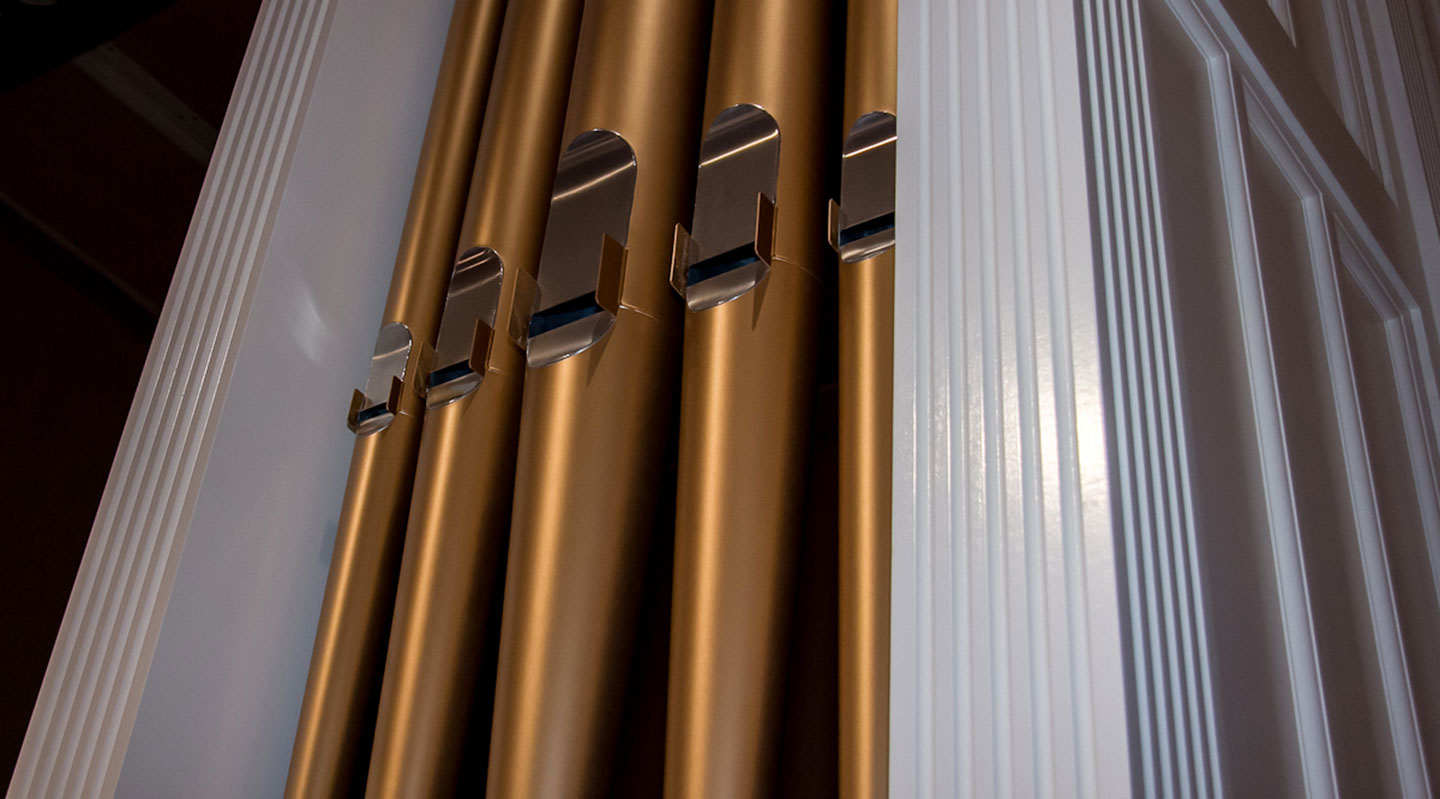Guidelines for Pipe Organ Temperature Control
As energy costs continue to rise, many pipe organ owners will be re-examining how they heat and cool their worship spaces throughout the week. These guidelines are intended as a common-sense approach to climate control that can reduce utility bills while still avoiding the extreme conditions that may damage sensitive organ components. Extremes in temperature and humidity can be avoided without having to constantly run heating or air conditioning systems.
How temperature and humidity affect the organ
Organ pipes are like every other wind instrument: their pitch varies with the temperature. When the air is cool, pipes will sound flat. When the air is warm, pipes will sound sharp. This is because the air inside the pipe is less dense when it is warm and therefore oscillates faster. Expansion and contraction of the pipe metal itself is negligible.
Regardless of how raucous the organ sounds when it is extremely hot or cold, it will quickly come back into tune at the designated temperature used during worship services. Of course, that same temperature needs to be maintained whenever your organ technician is tuning the organ.
While temperature extremes are not a big concern, excessive seasonal variations in humidity can cause problems with certain organ components. Wood expands, contracts, and twists as humidity rises and falls. Good organ design can compensate for most problems with wood movement, but extreme dryness caused by continuous winter heating for several days at a time can lead to serious wood cracking. A humidity gauge placed inside the organ should generally stay above 30% during the winter and below 80% during the summer.
General Temperature Control Procedures
- Bring the worship space to your normal designated temperature only when it will be occupied for public services.
- Turn on the heating/cooling (“HVAC”) system sufficiently far in advance to allow each part of the organ to reach its normal temperature. If your HVAC system was designed with good air circulation patterns in mind, stable temperatures can usually be achieved inside the organ three to six hours after turning on the system. Allow extra time when outside temperatures are extreme or if air does not circulate freely through all parts of the organ.
- If the worship space is unoccupied for most of the week, lowering the winter midweek heat setting to around 40 degrees (or slightly higher in mild climates) will naturally keep the relative humidity high enough that a humidifier may be unnecessary. If no heat is used for the entire week during freezing weather, it is important to slowly raise the temperature incrementally over at least a 24-hour period.
Possible upgrades to your HVAC system for improved temperature stability and energy efficiency
- Ask your organ technician to install extra return-air duct lines or a small, quiet centrifugal blower within the organ to pull air through all parts of the organ. If any organ pipes are near uninsulated roof decks, it is especially important to pull stratified air out of those areas. Increase the size of HVAC grilles and/or remove metal grates to quiet the rush of air. Do not add supply registers near organ pipes, since air blowing directly on them can cause wide temperature swings as the system cycles on and off. Remove organ grille cloth wherever feasible to promote better air circulation.
- Develop a page of clear HVAC operating procedures and post it on the wall next to the controls. Consider replacing overly complicated system controls. Relocate any thermostat that is exposed to sunlight or too close to exterior doors and windows. Thermostats need to be fairly close to the large return-air grilles within the worship space.
- HEATING: If the heat must be on for more than an entire day and there are prolonged humidity readings below 30% inside the organ, install a humidifier. Humidifiers should ideally be a part of the main HVAC system; if a separate unit must be placed in the organ chamber, great care must be taken to ensure that water cannot drip on any organ parts. Malfunctioning humidifiers and overflowing dehumidifiers can severely damage organ pipes and windchests. Never place a humidifier near the blower intake area of the organ.
- COOLING: If summer humidity readings are often above 80%, a dehumidifier in the duct line may be needed to help the primary compressor remove enough moisture from the air. If the primary compressor is severely oversized and therefore not able to run long enough during off-peak times to lower humidity, consider adding a smaller secondary compressor. Running only the secondary compressor for a few hours during the week may be all that is needed to maintain summer humidity levels below 80%. As long as humidity remains generally below 80%, organ components should be fi ne even though temperatures during the week may be around 100 degrees during the hottest weather.
Since these guidelines cannot anticipate every situation, it would be wise to talk with your pipe organ technician about any special conditions in your worship space that may require unique climate control procedures and remedies. Pipe organ technicians are often the best source of information regarding HVAC controls because they have seen what does and doesn’t work in a wide variety of buildings throughout your region.

